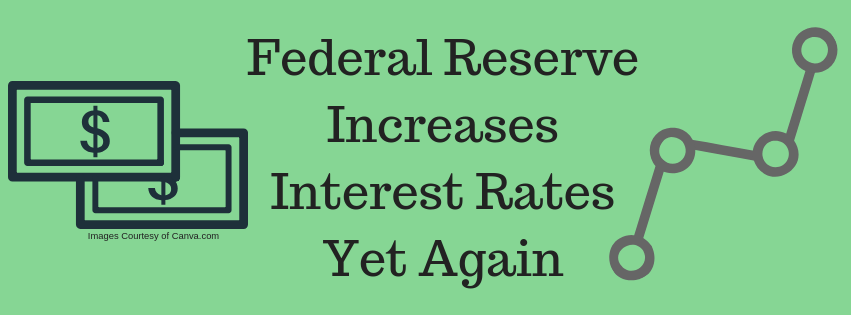For the third time this year, the Federal Reserve has raised their interest rates yet again from 2% to 2.25%, and according to most, it’s a change that was both expected and welcome. Used to calculate the rates for credit cards, mortgages, and other forms of consumer loans, the interest increase was unanimously voted in under Chairman Jerome Powell for one simple reason:
The economy is on the rise.
Ever since the recession, the Federal Reserve (Fed) has kept the rates at never-before-seen lows in the interest of helping the economy grow and level out once more. But with little unemployment, inflation under control, small businesses thriving, and entrepreneurial optimism blossoming, the time is right for the Fed to gradually begin increasing those rates.
The trick, however, lies in the timing and just how much. Too fast and they can risk a recession, too slow and the economy will become fragile from overgrowth.
So far, “the Fed shows no signs of taking (a) breath in rate hikes,” Navy Federal Credit Union corporate economist, Robert Frick, wrote in a research article.
Though gradual and small climbs, as mentioned above, this is the third interest increase this year, while a fourth is expected by central bankers to take place sometime in December. Come 2019, another three interest hikes are expected by the Fed, before finally settling with one more in 2020.
Another change, enacted by the central bank, came in the form of dropping the word “accommodative” from its monetary policy description – signaling the belief that interest rates are a neutral point in the economy, neither helping nor harming its growth.
However, there are concerns with the Fed’s increased rates as businesses worried about the U.S.-China trade war fear that the higher tariffs could lead to an increase in consumer prices – and thereby less sales.
In response to this, though the Fed raised their expected economic growth for 2018 from 2.8% to 3.1%, by 2019, growth is anticipated to lower back to 2.5% – though still higher than last quarter’s estimated 2.4%.
Come 2020, an economic stand-still is expected, before lowering by 1.8% in 2021 according to the FOMC.
But for now? “Our economy is strong,” Chairman Powell reiterates. “These rates remain low, and my colleagues and I believe that this gradual returning to normal is helping to sustain this strong economy.”
Thank you to the CNN Business blog for the information used to support this post.
